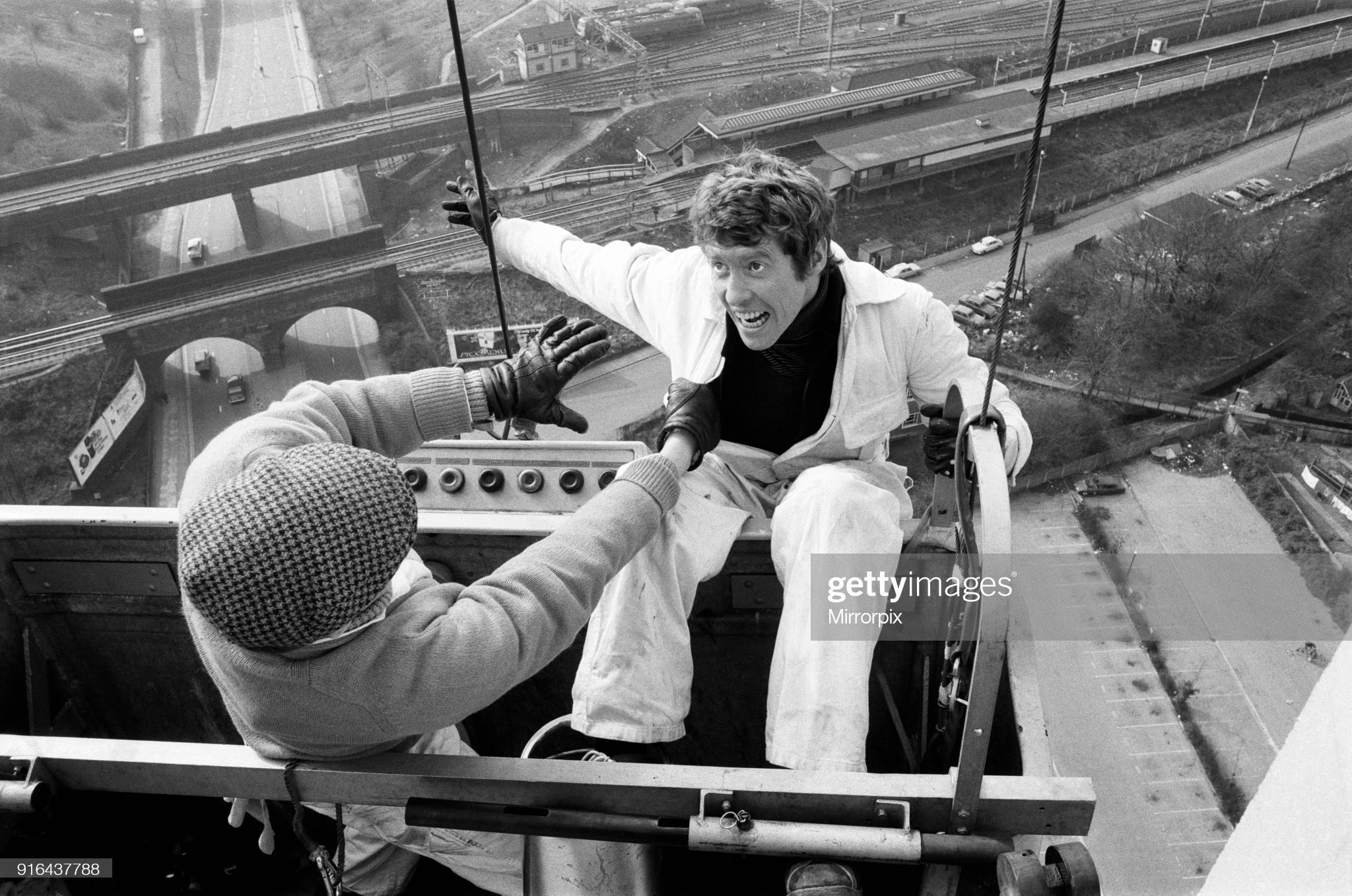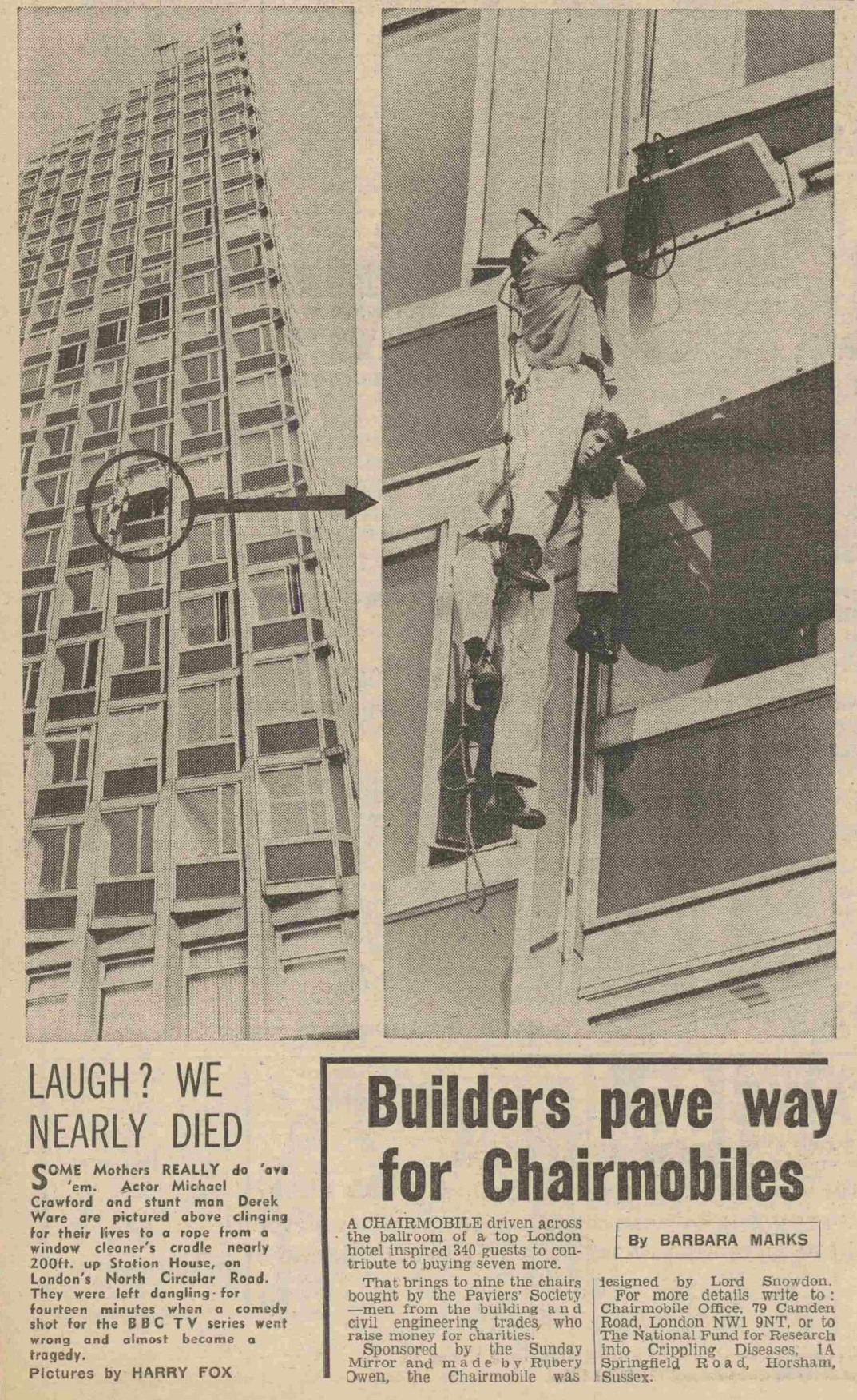Hello there. Welcome to another exciting instalment of “interesting studio recording dates for audience sitcoms”. And if you’ve managed to get past that sentence and onto this one, I’m presuming you find them exciting too. Hey there. I like you.
Previously, we’ve taken a look at recordings for So Haunt Me, where part of Series 3 was shot just nine days before transmission. We also proved wrong some nonsense on Wikipedia about Series 5 of Are You Being Served? being shot the day before air – in fact, it was a week. Still close to transmission, but rather different than a mere day.
That particular situation is far from without precedent. Huge chunks of Series 3 and 4 of Dad’s Army were also recorded in studio a week before transmission1; “The Day the Balloon Went Up” was recorded on 23 October 1969, and broadcast just a week later on the 30th October. A couple of weeks later, “Menace from the Deep” was recorded on the 7th November, and broadcast just six days later, on the 13th November.
All of which is worth noting. But there is a vague disappointment that I couldn’t find a normal sitcom which really did record the day before it was due to air. Sure, we could cheat and just say Drop the Dead Donkey, but that’s no fun. That was a topical show specifically designed to be shot close to transmission. The joy here would be an otherwise normal sitcom being made surprisingly down to the wire.
Ladies and gentlemen, we have one. Regular helpful person to this site David Brunt stepped in, and gave us a brilliant, highly unexpected example.
Let’s take a look at the recording dates of Some Mothers Do ‘Ave ‘Em, Series 1.2
| Episode | RX | TX |
|---|---|---|
| Getting a Job | 27/1/73 | 15/2/73 |
| George’s House | 6/2/73 | 22/2/73 |
| Love Thy Neighbour | 15/2/73 | 1/3/73 |
| Have a Break, Take a Husband |
24/2/73 | 8/3/73 |
| The Hospital Visit | 5/3/73 | 15/3/73 |
| The Psychiatrist | 19/3/73 | 22/3/73 |
| The Employment Exchange | 28/3/73 | 29/3/73 |
A few things to note. Firstly, the series was recorded in exactly the same order in which it was transmitted. Secondly, the series started airing the night the third episode was recorded, meaning if you were in the studio audience for that third episode, you actually missed the first episode of the series! You weren’t going to have a home video recorder in 1973, so anyone in that audience would have had to wait for the repeat of the first episode the following year3 to see it.
But the really odd thing about the recording of the series is that the schedule seems to slip. If they had kept up the weekly recordings, as most sitcoms did, then the series would have kept nearly three weeks ahead of transmission. But the gap between recordings here is longer: often 9 days, and a full two weeks between “The Hospital Visit” and “The Psychiatrist”.
It being 1973, my immediate thought was that a strike had delayed recordings. But in fact, there is a more deliberate, considered reason for the programme taking longer to make than usual. As is so often the case, yer man Richard Webber can illuminate proceedings, in his book on the series:
“After spending the first ten days of 1973 pre-filming on locations including Chiswick, Windsor and Herne Bay, the team moved into the studio for rehearsals. Recording the seven-part series covered the period 27 January to 28 March, with an eight- or nine-day turnaround for each show, unlike the normal weekly cycle for most sitcoms. Two reasons dictated the need for a longer production period: first, the scripts were heavy in prop work and it was felt more rehearsal time should be allowed to accommodate this; secondly, as explained by Duncan Wood in a memo dated 31 August 1972, ‘this will be Michael Crawford’s first major television series. It is as important to him as it is to us, and this schedule gives him extra time for study, discussion and rest.'”
– Some Mothers Do ‘Ave ‘Em: Celebrating Thirty Years with Frank and Betty, Richard Webber, p.53
Then there’s the peculiarity of the two week gap between “The Hospital Visit” on the 5th March, and “The Psychiatrist” on the 19th. We do know at least one thing which happened between those two recordings: they did some more location shooting. The famous window cleaning sequence from the final episode of the series, “The Employment Exchange” seems to have been recorded on the 10th March 1973, according to Getty.

And while the dates on Getty have been known to be inaccurate at times, the above date is backed up by the Sunday Mirror publishing pictures of the shoot along with a short report on the 11th March. Because this was the famous stunt which went wrong: the cradle got stuck, leaving Michael Crawford hanging off the edge with no way of getting back up:4

From nearly being killed shooting a film sequence, to it being broadcast in a sitcom 19 days later, with a studio audience laughing hysterically. Comedy is a cruel business.
All of which leads us to the key thing about these recording dates. By the time of that final episode, “The Employment Exchange”, transmissions have caught up with the making of the series to the point where the episode really was recorded the day before transmission. The studio date for that episode was the 28th March 1973, and it was broadcast to the nation on the 29th March. Which means the famous sequence where Frank has a mishap with the computer at the employment exchange was shot less than 24 hours before air:
Which still blows my mind slightly, despite the fact that my day job involves prepping and transmitting comedy shows. It’s not a strange thing for a topical comedy show like Have I Got News for You to record the day before air. Neither is it a strange thing for a sitcom to have a last-minute re-edit to correct the end credits or something, and so be delivered late. Even an entirely live episode isn’t unknown: Mrs. Brown’s Boys and Not Going Out have done this in recent years, and is a whole different thing.5
But an entire episode of a normal sitcom recorded less than 24 hours before air fires off strange things in my brain. And I think part of the reason for that is because of how long the show has survived. When “The Employment Exchange” was made, very few people would have thought the episode would be loved and watched 50 years later. It’s that contrast: the ultra-quick shooting and then broadcast, followed by the long, slow tail of repeats, VHS, DVD, and streaming. Sure, many sitcoms which have been loved for decades were essentially one evening’s recording at Television Centre. But a one day turnaround? If I found 50 other sitcom examples of this, I think I’d still blink in surprise and delight.
And to think: at the start of 1973, not a single frame of Some Mothers Do ‘Ave ‘Em had been shot. By the end of March, just three months later, seven episodes of the show had been broadcast. I find that production schedule thrilling. No programmes hanging around on the shelf for months. No messing about. Just get it done, broadcast, and then figure out what to do next.
Oh, what was next, I hear some of you ask? That would be another six episodes of the show, made and transmitted before the end of the year. 13 episodes of ambitious audience sitcom in total. Perhaps British TV comedy could do with a smidge more of this sheer speed today.
I mean, without nearly killing your lead actor, perhaps. But that’s a detail.
As referenced in Graham McCann’s Dad’s Army: The Story of a Very British Comedy. ↩
The recording dates in this table are taken from Richard Webber’s book on the series. I’ve also cross-referenced the dates for “Getting a Job”, “Love Thy Neighbour” and crucially “The Employment Exchange” with the original paperwork just for safety, and they all match. ↩
On the 4th September 1974. ↩
Footage of which is shown in detail in the 1977 behind-the-scenes documentary To Be Perfectly Frank. ↩
To say nothing of 1950s sitcoms, of course. The first three TV series of Hancock’s Half Hour were broadcast entirely live. ↩
